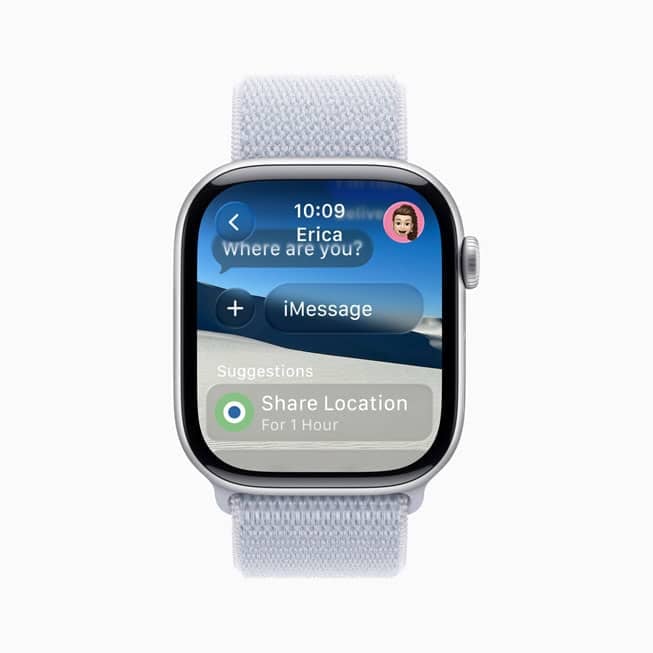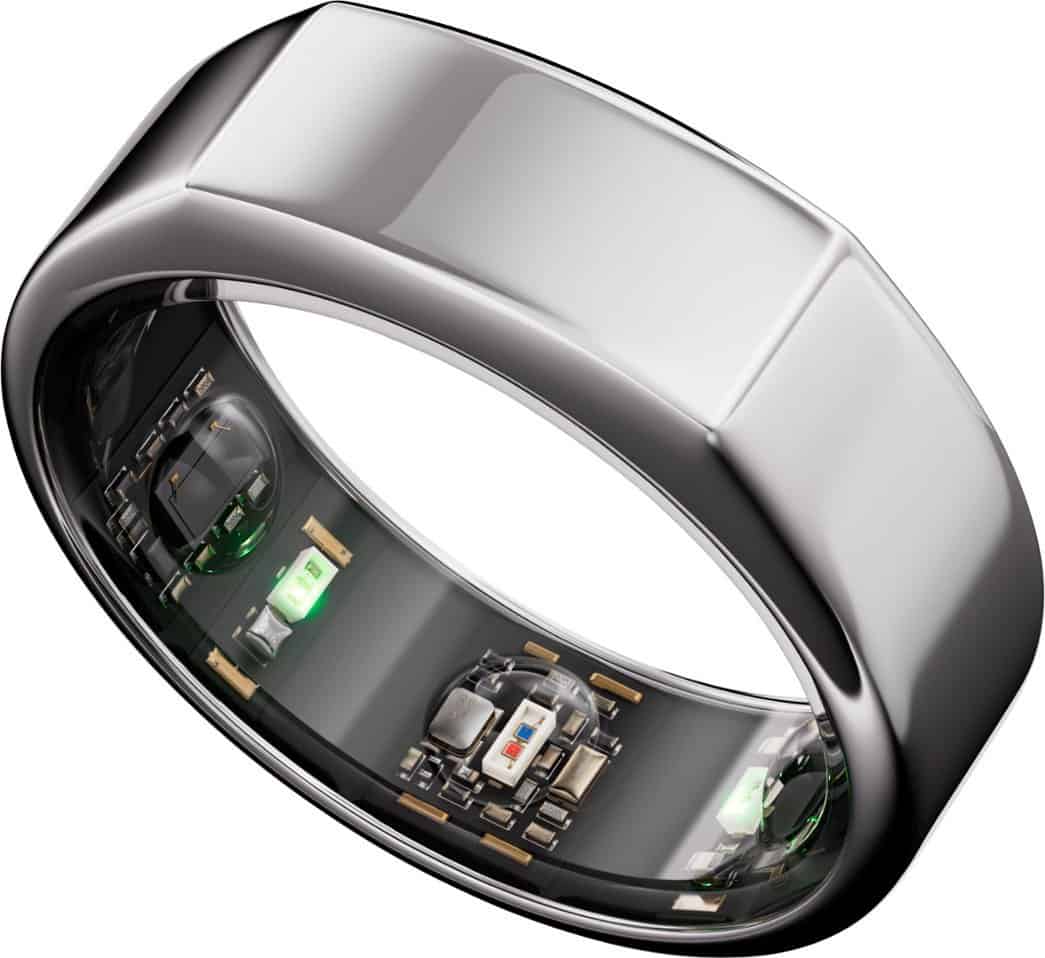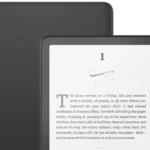Wearable health technology has surged forward in recent years, offering consumers a growing array of devices designed to monitor everything from heart rate and sleep quality to stress levels and physical activity. Among the most talked-about options in 2025 are the Oura Ring and the Apple Watch Series 10 — two devices that approach health tracking from very different angles but both deliver impressive capabilities.
Which Wearable Health Tracker Is Right for You?
Whether you’re a data-driven athlete, a wellness enthusiast, or someone simply looking to improve sleep and recovery, understanding the nuances between these two devices can help you choose the right tool for your lifestyle and goals.
The Oura Ring: Discreet, Deep Sleep & Recovery Focus
The Oura Ring has carved out a niche as a sleek, ring-shaped wearable that prioritizes sleep, recovery, and overall wellness. Unlike wrist-worn devices, its form factor is subtle and comfortable enough to wear 24/7 without feeling bulky or intrusive. This is a key advantage for users who want continuous monitoring without distraction.
Key Strengths:
- Sleep Tracking Excellence: Oura’s sensors capture detailed sleep stages, including REM, deep sleep, and light sleep, and provide personalized insights on sleep quality and readiness scores.
- Long Battery Life: With a battery lasting up to 7 days on a single charge, the Oura Ring outperforms most smartwatches in endurance.
- Recovery & Readiness Metrics: It integrates heart rate variability (HRV), body temperature, and respiratory rate to give users actionable feedback on recovery and stress.
- Minimalist Design: Its ring form factor is water-resistant and less obtrusive, appealing to those who dislike bulky wrist devices.
Limitations:
- Limited Fitness Tracking: While it tracks steps and general activity, it lacks the advanced workout tracking and GPS features found in smartwatches.
- No On-Device Display: All data must be accessed through the companion smartphone app.
Apple Watch Series 10: The All-in-One Smartwatch & Health Companion

The Apple Watch Series 10 represents the pinnacle of smartwatch technology in 2025. Beyond fitness and health tracking, it functions as a fully integrated mini-computer on your wrist, with apps, notifications, calls, and music.
Key Strengths:
- Comprehensive Health Monitoring: Includes ECG, blood oxygen (SpO2) monitoring, fall detection, and even temperature sensing for cycle tracking.
- Advanced Fitness Features: GPS, workout recognition, swimming tracking, and integration with Apple Fitness+ provide a rich exercise ecosystem.
- Smart Features: Supports calls, texts, apps, Siri, and Apple Pay, making it a versatile daily companion.
- Seamless Apple Ecosystem Integration: Works flawlessly with iPhone, AirPods, and other Apple devices.
- Always-On Retina Display: Allows quick glances at stats and notifications without needing to raise your wrist.
Limitations:
- Battery Life: Typically lasts about 18-24 hours, requiring daily charging.
- Bulkier Form Factor: Some users find the watch less comfortable to wear overnight, especially for sleep tracking.
- Price: Generally higher cost when factoring in cellular versions and accessories.
Expert Opinions & User Insights in 2025
- Sleep and Recovery Focus: Health experts like Dr. Michael Breus, a sleep specialist, have praised the Oura Ring for its accuracy in sleep staging and readiness scores, calling it “one of the best tools for understanding your body’s recovery.”
- Fitness & Versatility: Fitness trainers and tech reviewers often recommend the Apple Watch for users who want a “do-it-all” device that supports workouts, health monitoring, and smart features in one package.
- Battery & Wearability: Consumer reports consistently highlight the Oura Ring’s battery life and discreetness as major selling points, especially for those sensitive to wearing bulky devices at night.
Price & Value Considerations
While prices fluctuate, the Oura Ring Gen 3 typically retails around $350-$400, and the Apple Watch Series 10 starts at approximately $399, with cellular models costing more.
- Oura Ring: Best for users who want deep wellness insights and long battery life in a minimalist form.
- Apple Watch: Ideal for those seeking a multi-functional smartwatch with extensive fitness and health features as well as smart connectivity.
Side-by-Side Comparison Table: Oura Ring vs Apple Watch Series 10
| Feature | Oura Ring Gen 3 | Apple Watch Series 10 |
|---|---|---|
| Form Factor | Ring | Wristwatch |
| Battery Life | Up to 7 days | ~18-24 hours |
| Display | None (app-based) | Always-on Retina Display |
| Sleep Tracking | Advanced, detailed sleep stages | Good, but less detailed |
| Heart Rate Monitoring | Continuous HR + HRV | Continuous HR + ECG |
| Blood Oxygen (SpO2) | Yes | Yes |
| GPS | No | Built-in GPS |
| Workout Tracking | Basic activity & steps | Extensive workout modes + GPS |
| Smart Features | None | Calls, texts, apps, Siri, Apple Pay |
| Water Resistance | Up to 100m | Swimproof |
| Compatibility | iOS & Android | iOS only |
| Price Range | $350-$400 | Starting at $399+ |
Conclusion: Which Should You Choose?
- Choose the Oura Ring if: You want a discreet, comfortable device focused on sleep quality, recovery, and overall wellness with minimal fuss and excellent battery life. It’s perfect for users who want to optimize rest and stress without needing a full smartwatch experience.
- Choose the Apple Watch Series 10 if: You want a feature-rich smartwatch that combines top-tier fitness tracking with smart connectivity, notifications, and app integration. Ideal for fitness enthusiasts and those embedded in the Apple ecosystem who want an all-in-one device.
Additional Resources for Readers:
By understanding the unique strengths of the Oura Ring and Apple Watch, you can select the wearable that best aligns with your health goals and lifestyle in 2025.
Key Takeaways
- The Oura Ring offers longer battery life and better sleep tracking in a discreet form factor.
- Apple Watch provides more versatile functionality with superior workout tracking and smartwatch features.
- Your choice between these wearables should depend on your priorities—sleep monitoring versus comprehensive fitness tracking and smart features.
Comparison of Design, Comfort, and Wearability
The Oura Ring and Apple Watch offer distinctly different approaches to wearable health tracking through their contrasting form factors, materials, and wearing experiences.
Aesthetic and Build Differences
The Oura Ring features a minimalist, jewelry-like design that blends seamlessly with other rings. Available in several finishes including silver, black, stealth, and gold, it maintains a consistent cylindrical shape with a subtle flattened area on top.
The Apple Watch takes a more tech-forward approach with its rectangular or square display. It comes in aluminum, stainless steel, or titanium cases with numerous band options from sporty silicone to elegant metal links.
Size difference is significant – the Oura Ring weighs just a few grams and maintains a low profile, while the Apple Watch is more substantial on the wrist with its screen and internal components.
The ring’s design prioritizes discretion, while the watch embraces visibility with its customizable watch faces and interactive touchscreen.
Comfort for Continuous Wear
The Oura Ring excels in comfort for 24/7 wear. Its lightweight design makes it easy to forget you’re wearing it. Many users report they barely notice it during sleep or daily activities.
The Apple Watch, being larger and heavier, can feel more noticeable during wear. Some users remove it at night due to discomfort while sleeping or to charge it.
Wearing style preferences matter significantly. People unaccustomed to rings might find the Oura initially strange, while those who regularly wear watches may naturally prefer the Apple Watch.
Search results indicate many users find the ring more comfortable, especially for sleep tracking, due to its lightweight construction and unobtrusive profile.
Waterproofing and Durability
Both devices offer strong water resistance. The Oura Ring is water-resistant to 100 meters, making it suitable for swimming, showering, and most water activities without concern.
The Apple Watch (Series 9 and Ultra models) provides similar water resistance for swimming and water sports. Both devices include mechanisms to expel water after submersion.
The Oura Ring’s titanium construction gives it excellent scratch resistance and durability for daily wear. Its lack of a screen eliminates a common point of damage found in smartwatches.
The Apple Watch features tough Corning glass but remains more vulnerable to impacts on its display. However, it offers more rugged case options like the Ultra model specifically designed for extreme conditions.
For active lifestyles, both devices hold up well, though the ring’s simpler design means fewer potential failure points over time.
Health and Fitness Tracking Features
Both the Oura Ring and Apple Watch offer comprehensive health monitoring capabilities, though they excel in different areas. Each device provides unique insights that may appeal to different users depending on their wellness priorities.
Sleep Tracking Capabilities
The Oura Ring has established itself as a superior sleep tracker compared to the Apple Watch. It monitors various sleep stages including light, deep, and REM sleep with greater precision. The ring’s form factor makes it more comfortable to wear during sleep than a watch.
Oura provides a detailed Sleep Score each morning based on total sleep time, efficiency, restfulness, REM sleep, and deep sleep. Users receive personalized insights about their sleep quality and recommendations for improvement.
The Apple Watch has improved its sleep tracking features but still lacks the depth of Oura’s analysis. It tracks basic sleep metrics and provides general trends, but doesn’t offer the same level of sleep stage differentiation or detailed recovery recommendations.
Neither device is perfect, but for serious sleep tracking, the Oura Ring typically provides more actionable data about sleep quality and patterns.
Activity and Fitness Monitoring Accuracy
The Apple Watch excels in comprehensive fitness tracking with built-in GPS, workout detection, and integration with fitness apps. It offers real-time metrics during workouts and encourages activity through its rings system.
The watch can track numerous workout types specifically and provides detailed metrics like pace, distance, and heart rate zones. Its larger screen allows users to view stats during exercise without needing a phone nearby.
Oura Ring takes a different approach, focusing more on overall movement and less on specific workout metrics. It tracks steps, calories, and activity levels but lacks the Apple Watch’s GPS capabilities for precise distance measurement.
For serious athletes or those who want detailed workout analysis, the Apple Watch offers more comprehensive fitness tracking. However, the Oura Ring adequately captures daily movement for general wellness tracking without the bulk of a watch.
Menstrual and Cycle Tracking
Oura Ring offers advanced menstrual and cycle tracking features that many users find more helpful than Apple Watch’s options. It integrates temperature data with cycle predictions to provide more accurate forecasting of menstrual phases.
The ring can detect subtle body temperature changes that often precede menstruation. This helps users identify patterns in their cycle and understand how it affects sleep, activity, and overall wellness.
Apple Watch includes basic cycle tracking through its Health app. Users can log symptoms and flow, but the watch lacks the temperature sensing capabilities that make Oura’s predictions more accurate.
For those who prioritize comprehensive cycle tracking as part of their health monitoring, the Oura Ring generally provides more detailed insights and better prediction accuracy for menstrual cycles and fertility windows.
Temperature and Recovery Insights
The Oura Ring features continuous temperature monitoring that provides valuable insights into overall health and recovery. It tracks nightly temperature variations that may indicate illness, stress, or hormonal changes.
Temperature data combines with other metrics to create a daily Readiness Score. This score helps users understand when their body needs rest versus when it’s ready for more intense activity.
The Oura also measures heart rate variability (HRV) and resting heart rate to evaluate recovery status. These metrics offer a holistic view of how well the body is recovering from stress and activity.
While newer Apple Watch models include temperature sensing, they don’t provide the same depth of recovery analysis. The Apple Watch focuses more on fitness performance than recovery insights.
For users seeking a comprehensive picture of their body’s recovery state and potential early warning signs of illness, the Oura Ring typically offers more detailed temperature and recovery tracking.
Frequently Asked Questions
Consumers comparing the Oura Ring and Apple Watch often have specific questions about features, accuracy, and functionality. These questions help potential buyers understand which device might better suit their health tracking needs.
How do the fertility tracking features compare between the Oura Ring and the Apple Watch?
The Oura Ring offers more comprehensive fertility tracking by monitoring body temperature throughout the night. This data helps predict ovulation windows more accurately.
Apple Watch provides cycle tracking but lacks the continuous temperature monitoring needed for precise ovulation prediction. It relies more on user-input data like symptoms and menstrual dates.
Both devices can sync with dedicated fertility apps, but Oura’s temperature data provides a more passive and complete picture for those tracking fertility.
Which device provides more accurate heart rate monitoring: Oura Ring or Apple Watch?
The Apple Watch generally provides more accurate heart rate monitoring during exercise and active periods due to its placement on the wrist and advanced sensors.
Oura Ring performs better during sleep and resting periods. The finger’s blood vessels allow for clearer readings when the body is still.
For continuous 24-hour monitoring, the Apple Watch Series 10 offers more consistent readings during various activities, while the Oura Ring 4 excels in overnight heart rate variability measurements.
How does sleep tracking accuracy differ between the Oura Ring and the Apple Watch?
Oura Ring is widely considered superior for sleep tracking. It provides detailed sleep stage analysis, disturbance monitoring, and a comprehensive sleep score.
The ring’s placement on the finger allows for more consistent readings throughout the night without the discomfort a watch might cause.
Apple Watch has improved its sleep tracking capabilities but still requires more battery management since it needs charging more frequently. Its sleep data focuses on sleep duration and consistency rather than detailed sleep architecture.
What unique functions does the Oura Ring offer that the Apple Watch does not?
Oura Ring provides a “Readiness Score” that combines various metrics to assess overall recovery state – a feature not available on Apple Watch.
The ring offers distraction-free health tracking without notifications, screens, or alerts interrupting daily activities.
Its discreet design makes it suitable for professions or situations where watches are impractical or not allowed. The battery life of 5-7 days also exceeds Apple Watch’s typical 18-36 hour range.
What are the disadvantages of using an Oura Ring compared to an Apple Watch?
The Oura Ring lacks a display, requiring users to check their phone app for all data and insights.
It doesn’t offer real-time workout tracking, GPS functionality, or the ability to respond to messages and calls that Apple Watch provides.
The subscription model for Oura ($5.99/month) means ongoing costs beyond the initial purchase price, whereas Apple Watch’s basic health features don’t require additional subscriptions.
How do the latest models, Oura Ring 4 and Apple Watch Series 10, compare in overall performance?
The Oura Ring 4 offers improved battery life and more accurate temperature and blood oxygen monitoring compared to previous generations.
Apple Watch Series 10 features a thinner design, brighter display, and more advanced health sensors for activity tracking and ECG monitoring.
For overall health management, the Oura Ring 4 excels at passive monitoring and sleep insights, while Apple Watch Series 10 provides superior active fitness tracking and smartwatch functionality.







